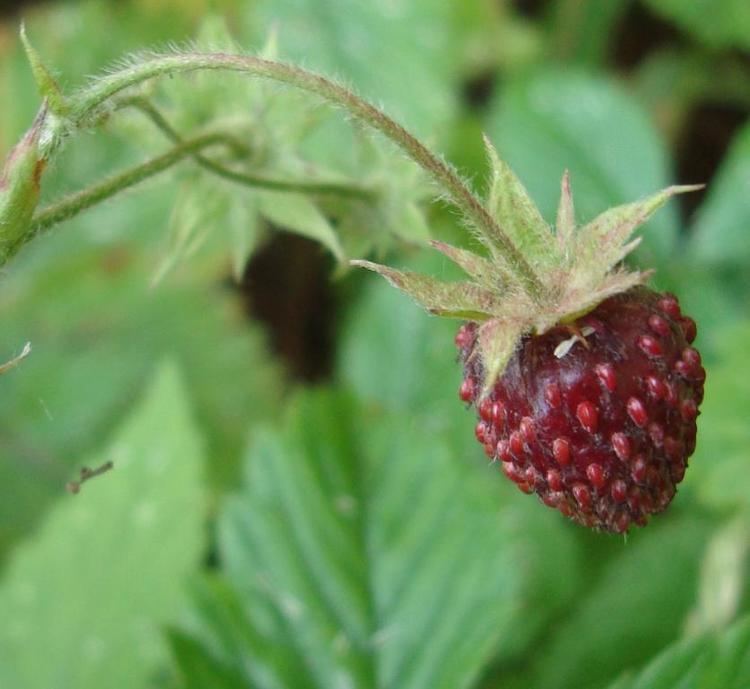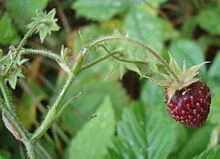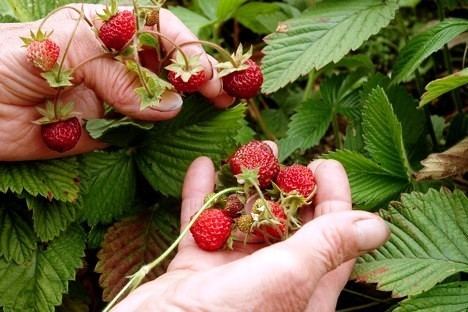Rank Species | Genus Fragaria Higher classification Strawberries | |
 | ||
Similar Strawberry, Red raspberry, Currant, Vaccinium uliginosum, European blueberry | ||
The musk strawberry or hautbois strawberry (Fragaria moschata), is a species of strawberry native to Europe. Its French name hautbois strawberry may be anglicised as hautboy strawberry. The plants are hardy and can survive in many weather conditions and are cultivated commercially on a small scale, particularly in Italy. The fruit are small and round; they are used in the gourmet community for their intense aroma and superb flavour, which has been compared to a mixture of regular strawberry, raspberry and pineapple. Popular cultivated varieties include 'Capron' and 'Profumata di Tortona'.
Contents

strawberry
Distribution
Musk strawberries grow wild to a limited extent in the forests of Central Europe, north into Scandinavia, and east into Russia. The musk strawberry is found growing along the edges of forests and requires moist and sheltered sites since they do not tolerate temperature fluctuations.
Polyploidy

All strawberries have a base haploid count of 7 chromosomes. Fragaria moschata is hexaploid, having three pairs of these chromosomes for a total of 42 chromosomes.
Cultivation
Musk strawberry has long been in cultivation in parts of Europe. This species was the first strawberry of any sort with a cultivar name, which was Le Chapiron (1576). By 1591, the cultivar was called Chapiton, then later Capiton. In the early 17th century an illustration appeared in the Hortus Eystettensis as fraga fructu magno. It was mentioned by Quintinye, gardener to Louis XIV, as Capron in 1672. At the beginning of the 19th century musk strawberries were the most common garden strawberry in Germany.
Cultivation of musk strawberries is not very different from that of garden strawberry (Fragaria × ananassa) or alpine strawberry (Fragaria vesca); the plants thrive in nutrient-rich soils. However, neither female plants nor hermaphrodite plants are self-fertile; they require pollen transfer from a male or a different hermaphrodite clone (or cultivar) of the same species, which is usually achieved by insect pollinators.
Cultivars:
